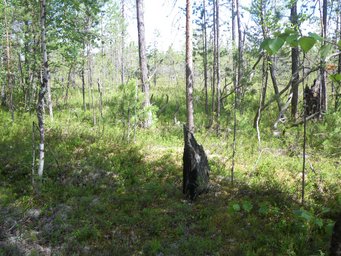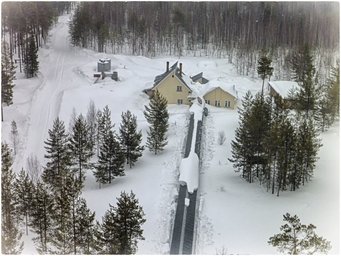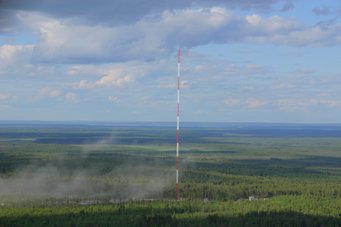
The Zotino Tall Tower Observation Facility (ZOTTO)
According to statements by the Alliance of Science Organisations in Germany and the President of the Max Planck Society, the ZOTTO project is currently suspended due to the illegal invasion of Ukraine. The people of Ukraine deserve our full solidarity at this moment!
Research work like the ZOTTO project has been planned for years and is massively affected by the current war situation. We live in a multidimensional world and only with the help of close international scientific cooperation can the crises of humanity, such as climate change, be overcome. Our solidarity therefore also goes to our long-standing Russian cooperation partners, the scientists and academics.
Technical cooperation with the state institutions of the Russian Federation will be discontinued with immediate effect until further notice, but measurements at ZOTTO will continue.
A hotspot in the global carbon cycle
During the recent decades warming trends in the near surface air temperature are being observed, in particular on the Northern hemisphere continents at high latitudes in the boreal and arctic zones. What will be the consequences of this warming?

The huge boreal and arctic landmass of Siberia constitutes an important “hot spot” in the global carbon cycle. Large forested areas interspersed with bogs and partially with permafrost soils characterize the Siberian landscape. Siberian forests comprise approximately 10% of the global carbon stored in vegetation and soils, they contribute 5-10% of the global terrestrial net primary productivity, and 65% of the Siberian forests lie on permafrost. The anticipated warming is expected to trigger feedback processes in the carbon cycle with potentially serious consequences. On the one hand, warmer temperatures imply longer vegetation periods leading to increased carbon uptake. On the other hand, this process will be offset by increased losses of soil carbon due to enhanced microbial activity under warming conditions.
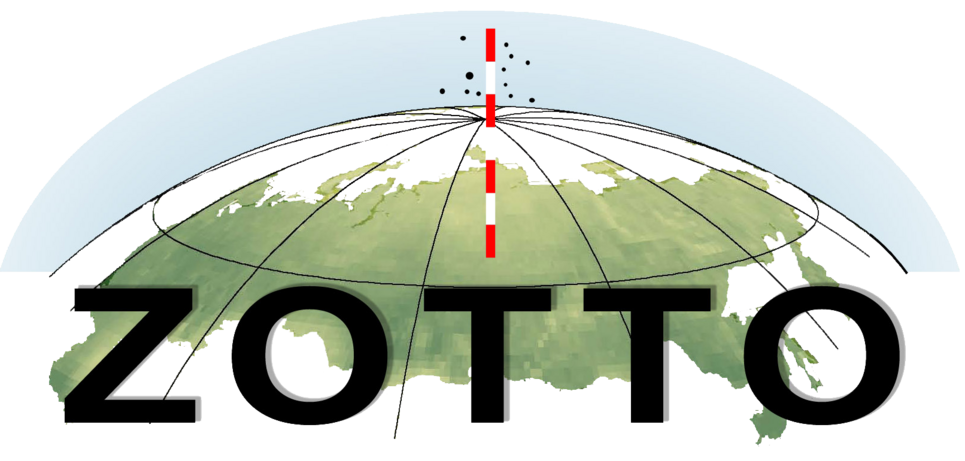
However, both of these effects depend critically on the available water and hence are subject to changing precipitation amount and distribution patterns. Additional critical processes, such as disturbances by fires and insects will also be affected by climate change. Finally Siberian permafrost contains huge quantities of organic carbon, of which by thawing a significant fraction could be released to the atmosphere as carbon dioxide or methane. How fast and how strong these feedback processes operate and which of them will dominate is still an open and highly pressing scientific question. Furthermore, although direct anthropogenic impacts are at present still relatively modest, changes in land use and management may become increasingly important, e.g. by increased forest logging or rerouting of Siberian rivers for irrigation in agriculturally favourable areas further south. Such influences have the potential to seriously impact the boreal ecosystems and modify the regional emissions of greenhouse gases with probable global consequences.
Why tall towers?
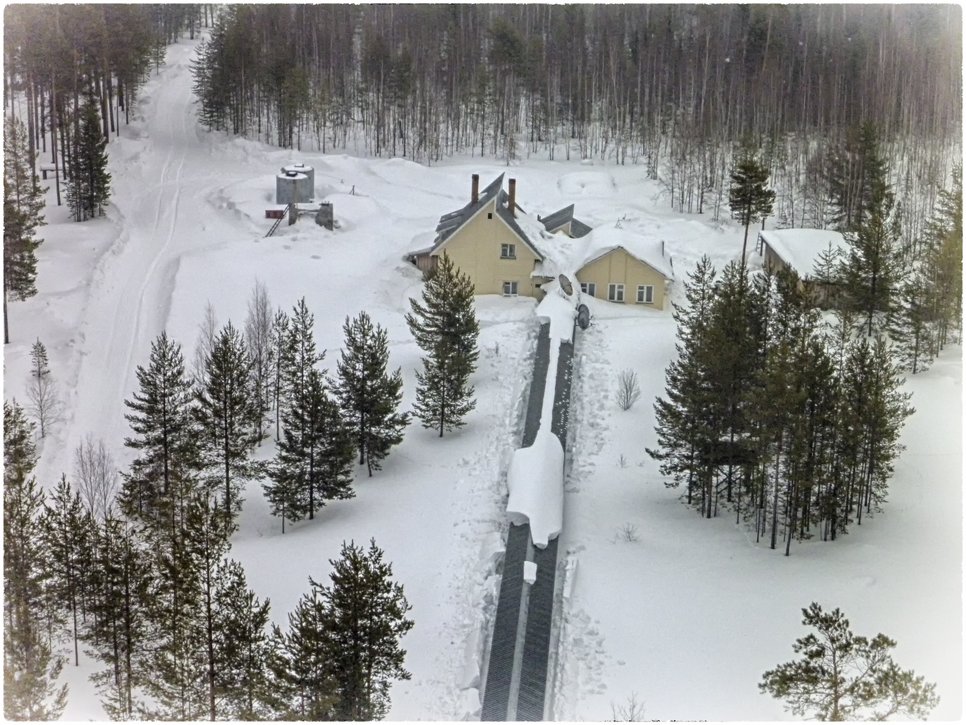
Whereas during night time the lower levels of the atmosphere are highly influenced by respiration processes of the ground, the 304 m height of the tall tower guarantees that the tower top can measure trace gas concentrations that are representative for the free troposphere. Tower measurements integrate atmospheric tracer signals over very large areas on the order of 106 km2. They also permit measurements of vertical concentration and flux profiles of trace substances and meteorological variables.
The measurements
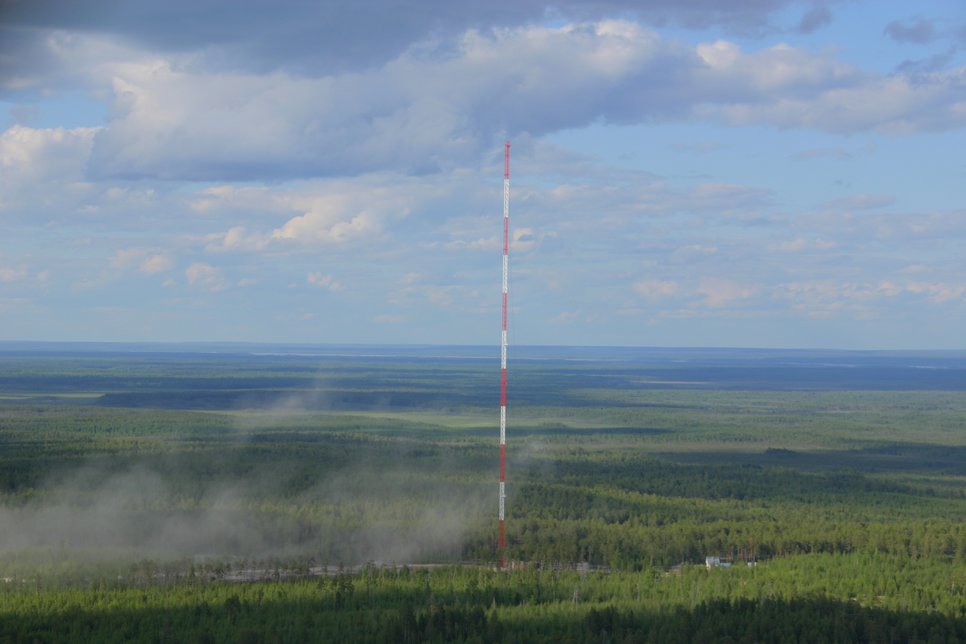
The core observations include continuous gas measurements of CO2, CH4, CO, NOx and ozone at various heights of the tower, and the standard meteorology (wind, temperature, humidity, and pressure). In addition, the isotopic composition of air samples is analyzed via flask sampling (13C/12C D/H, 15N/14N, 18O/ 16O stable isotope ratios on the different gases, as well as 14C and 18O on CO2 and CH4). Furthermore, a host of additional trace species of biogeochemical interest (e.g. aerosol density and size spectra) is measured by various partner groups.
The measured data are incorporated into comprehensive modelling frameworks comprising advanced atmosphere-biosphere exchange formulations, regional atmospheric models and 4-dimensional data assimilation techniques. This allows combining the tower data both with satellite measurements of the atmosphere and land surface and also with in situ forest biomass inventory data.
Further reading:
Mikhailov et al. (2015). Chemical composition, microstructure, and hygroscopic properties of aerosol particles at the Zotino Tall Tower Observatory (ZOTTO), Siberia, during a summer campaign. Atmos. Chem. Phys., 15, 8847-8869
Heimann, M. et al. (2014). The Zotino Tall Tower Observatory (Zotto): Quantifying Large Scale Biogeochemical Changes in Central Siberia. Nova Acta Leopoldina NF, 117(399), 51-64.
Winderlich et al. (2014). Inferences from CO2 and CH4 concentration profiles at the Zotino Tall Tower Observatory (ZOTTO) on regional summertime ecosystem fluxes. Biogeosciences, 11, 2055-2068
Chi et al. (2013). Long-term measurements of aerosol and carbon monoxide at the ZOTTO tall tower to characterize polluted and pristine air in the Siberian taiga. Atmos. Chem. Phys., 13, 12271-12298
Heintzenberg et al. (2013). Mapping the Aerosol Over Eurasia From the Zotino Tall Tower. Tellus B 2013, 65, 20062
